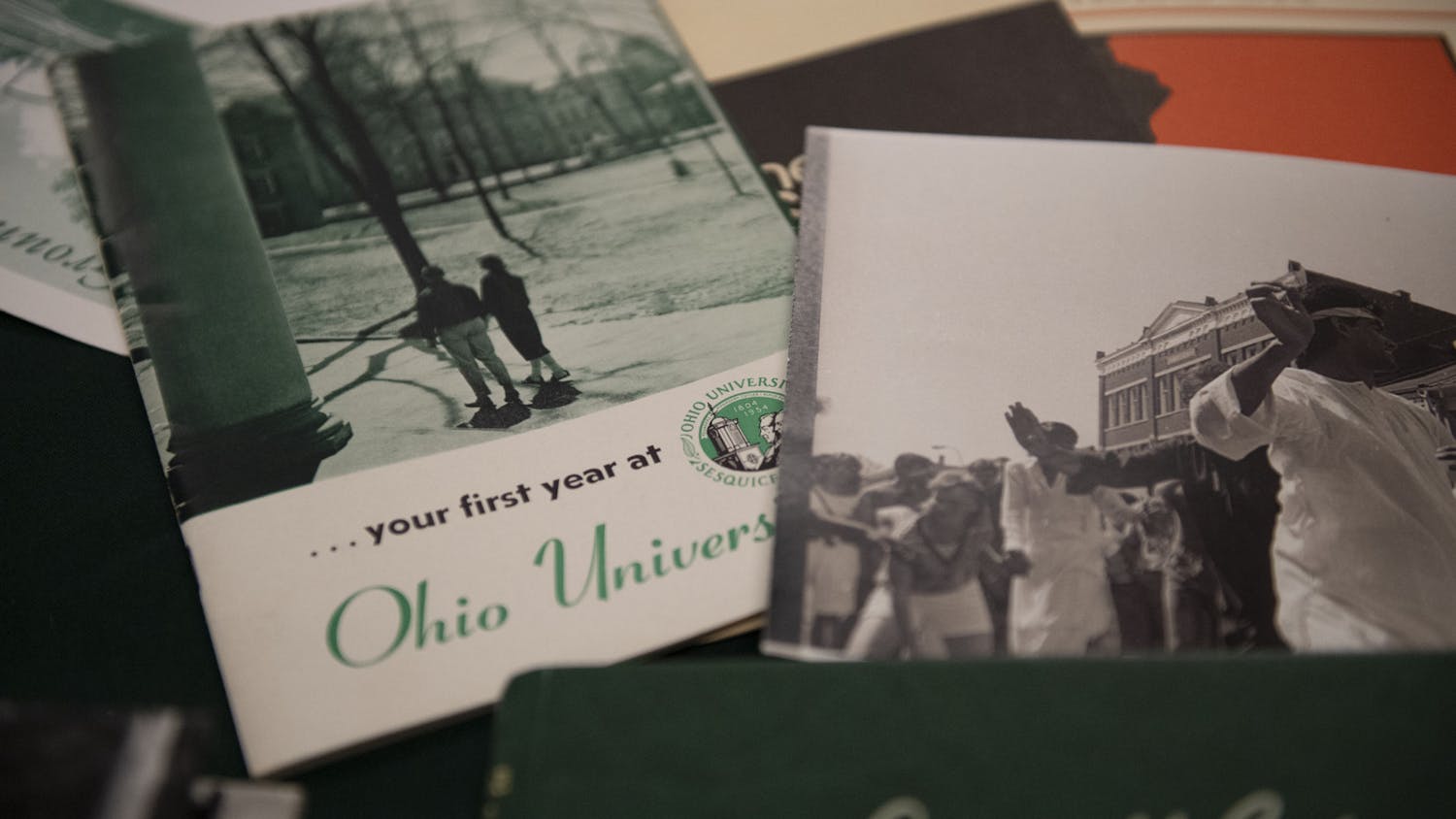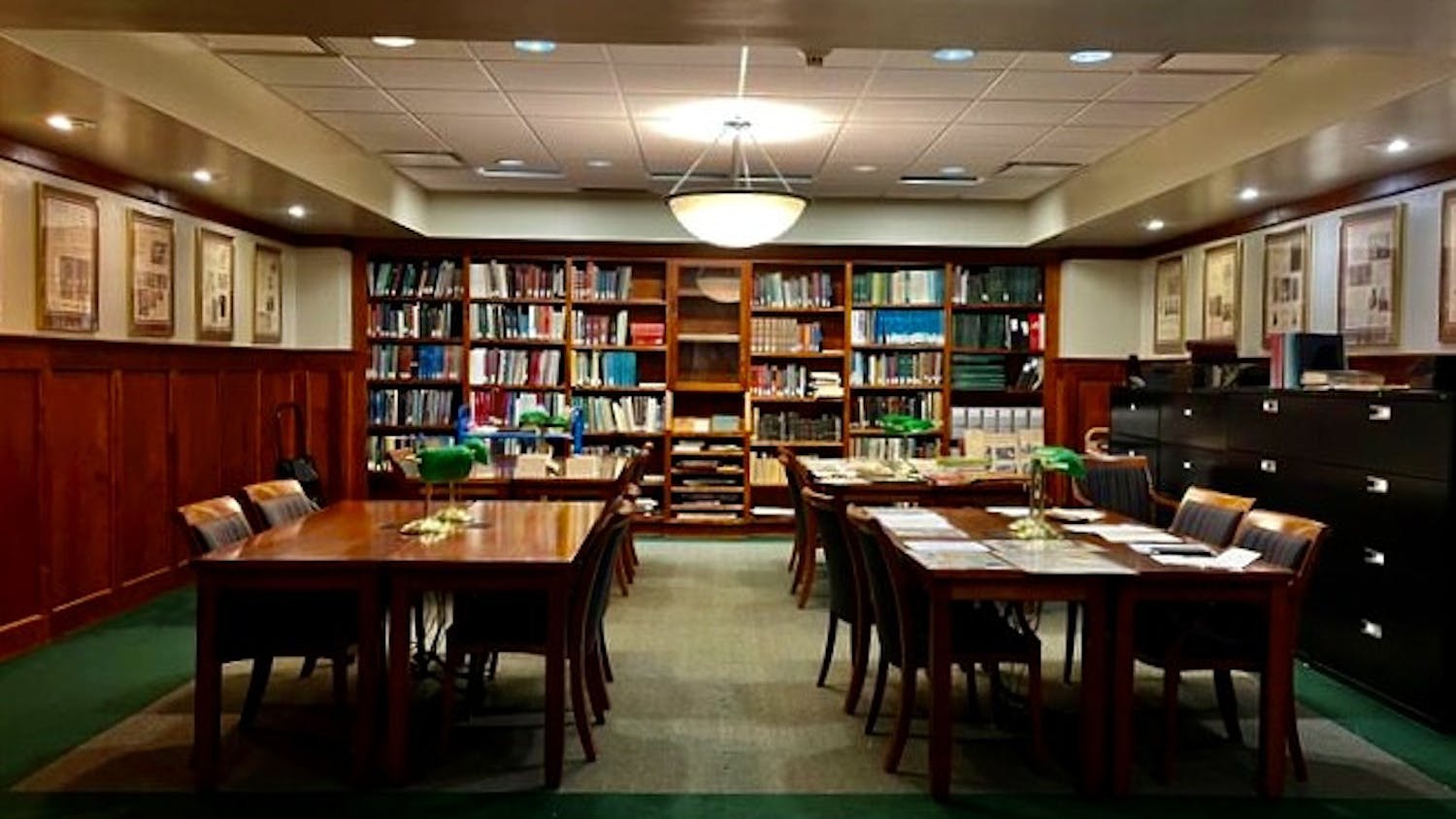When Amy Mackey let her white dog play in the water in Hocking for the first time, she didn’t expect him to come back orange.
“Basically, the stream is dead,” Mackey said.
It’s nothing like the water near her former home in Ashtabula County, which she said is much healthier.
Mackey is the coordinator of the Raccoon Creek Partnership — a 501(c) (3) nonprofit organization funded by local, state and federal funds. It aims to restore environmental health to a local watershed, or an area characterized by all runoff and drainage reaching the same outlet, which in this case is the Ohio River.
The partnership works with other organizations, such as AmeriCorps, Rural Action and the Ohio Environmental Protection Agency, among others. The group started out in the 1980s as the Raccoon Creek Improvement Committee and formed into a nonprofit in 2007.
“It started with a group of people in Gallia County,” said Mackey, a Hocking College graduate who has interned with the state Department of Natural Resources. “They realized the creek wasn’t healthy and wanted to clean it up.”
The watershed, which flows south from the Hocking Hills region into the Ohio River, spans across many Southeast Ohio counties. The watershed runs about 112 miles through Athens, Hocking, Vinton, Jackson, Meigs and Gallia counties.
Experts say the watershed has endured heavy impact from coal mining dating back to the late 1800s and early 1900s.
The Raccoon Creek Watershed is about 75 percent forested, and less than 25 percent is suitable for plant growth, according to the partnership’s website.
Acid mine drainage — a result of the chemical reaction between oxygen and sulfate compounds in the surrounding rocks — caused damaging effects to the ecosystem.
Part of the problem is the decreasing population of some of the organisms in the watershed — fish, dragonflies, newts and toads, to name a few — that in turn causes others that depend on them to die out as well.
The Raccoon Creek Partnership’s website states the result of the mining “lowers the pH of a stream, sometimes to the point of wiping out all of the life in it. In addition, the heavy metals picked up in the reaction precipitate out into streams, manifesting as a sludgy orange substance called ‘yellow-boy’ that coats all surfaces in the stream.”
Mackey said the organization began to run into financial problems in the 1990s. Shortly thereafter, however, it began to receive some of the backing it does today.
Since 1998, Mackey said, the organization has completed 14 cleaning treatment projects that cost about $12 million total.
Joe Jennings, an environmental studies graduate student at Ohio University, said biological pollution — or biopollution — results from sewage and animal waste contaminating the watershed.
The entire ecosystem near the watershed could be thrown off even further if people continue to mistreat and abuse the land, and many organisms residing there stand to be killed off, Mackey added.
The wildlife, dispersed throughout the watershed’s 42-mile stretch, need a warm-water habitat for survival, Mackey said.
Warm water is more conducive for thriving life in the streams, she said, adding that the group not only prioritizes cleaning the watershed but also educating people through programs such as nature hikes and children’s day camps, which are held at an aquatic education center in New Marshfield.
Trying to right the wrongs already committed to the watershed is only one step in creating a community that is more aware of how it treats the environment, said Rand Romas, a volunteer who helps run events held at the center. He is also a member of AmeriCorps, a community service-based partner organization.
Another key factor in making sure Raccoon Creek is safe from destruction is ensuring that future generations of area residents are more attuned to the proper treatment of the watershed.
Romas said it’s important to educate people about the natural beauty of the watershed — and how environmental hazards can ruin it — when they are young, seeing as “a lot of adults” might not be able to prioritize a change in their lifestyle to benefit the environment.
A camp session he ran late last month was made up of eight children who learned about the watershed by observing the plant and insect life in and around Pin Rod Lake, which is located down the road from the aquatic education center.
Stomping through the mud and enjoying the sunshine despite the brisk morning air, they scooped up river dwellers and other creatures to learn who calls the watershed home.
Mackey pointed out that some Athens County residents who have lived in Southeast Ohio for their entire lives could have had parents, grandparents or great grandparents involved in the harmful mining. That, she said, could serve as motivation for them to pitch in to resolve the problems.
“I think they do know (how important it is),” Romas said. “They just don’t realize they have the power to do anything about it.”
Jennings said he feels most people are “pretty aware” of the man-made problems at Raccoon Creek.
The watershed is available to the public for canoeing and kayaking, hunting, fishing, bird watching and hiking, among other activities.
Although Mackey said it’s “fun to be a part of (the partnership) and to influence people and educate people,” she added it can be “hard to get the word out” about the organization, and urges people to get involved.
Any donations to the organization would go toward its projects, including camps and further treatments to the water.
@KellyPFisher
kf398711@ohiou.edu
Contact
To donate to or get involved with the Raccoon Creek Watershed Partnership, contact Coordinator Amy Mackey at (740) 597-1473 or at mackey@ohio.edu. The Raccoon Creek Watershed Partnership is housed in Building 22 at The Ridges.






